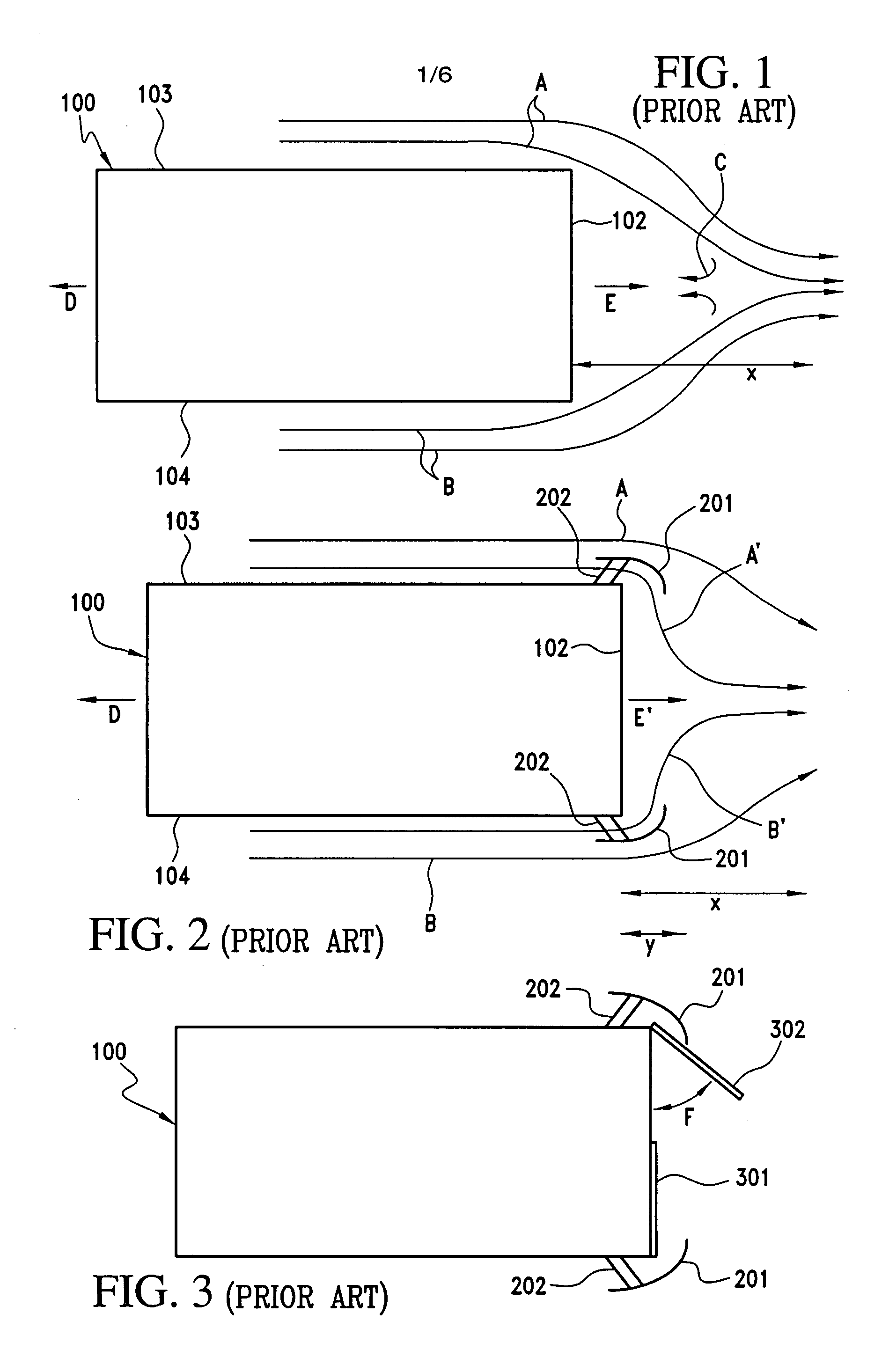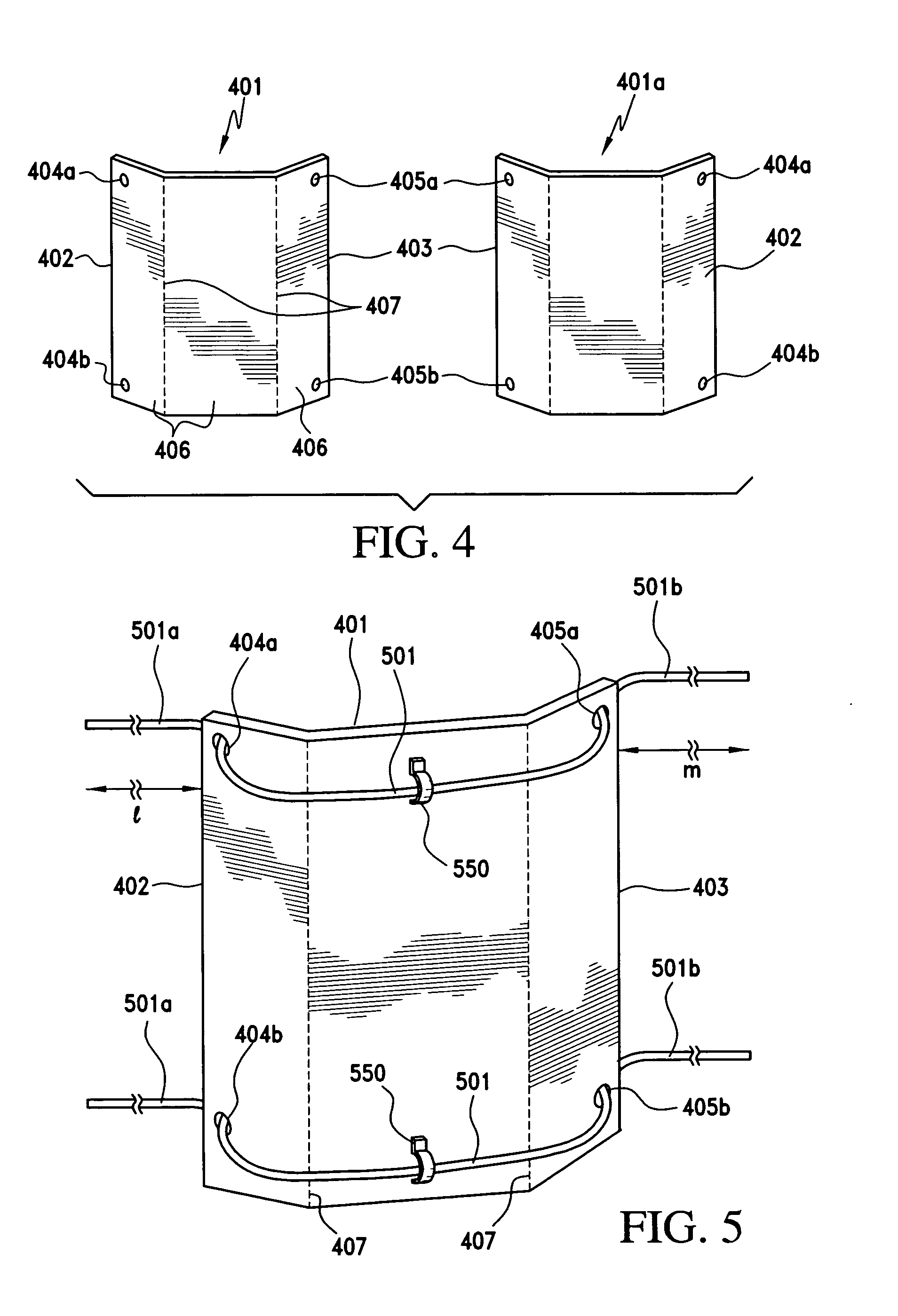Apparatus for reducing drag on unpowered vehicles
a technology for unpowered vehicles and apparatuses, which is applied in the direction of roofs, transportation and packaging, vehicle arrangements, etc., can solve the problems of reducing fuel economy, requiring a sizable replacement cost, and devices that have certain drawbacks, so as to reduce drag on the vehicle and reduce the effect of drag
- Summary
- Abstract
- Description
- Claims
- Application Information
AI Technical Summary
Benefits of technology
Problems solved by technology
Method used
Image
Examples
Embodiment Construction
[0034]FIG. 1 shows airflow around a vehicle 100, such as a trailer or a railroad car, having a generally planar rear surface 102, a right side 103, and a left side 104, when vehicle 100 moves in a forward direction D at a desired speed. Under these conditions, air moves, relative to vehicle 100, along the sides 103 and 104 in the direction of arrows A and B, respectively. The flow of air in the direction A and the flow of air in the direction B do not reunite immediately behind rear surface 102; rather, airflows A and B reunite at a point at a certain distance X behind surface 102. A zone of low pressure air is thereby created behind rear surface 102, between the flow of air in the direction A and the flow of air in the direction B. This low pressure zone acts as a partial vacuum, and sucks air from air flows A and B in the direction of arrows C, into the zone of low pressure air. Airflow in the direction of arrows C somewhat increases the air pressure behind surface 102, but also i...
PUM
 Login to View More
Login to View More Abstract
Description
Claims
Application Information
 Login to View More
Login to View More - R&D
- Intellectual Property
- Life Sciences
- Materials
- Tech Scout
- Unparalleled Data Quality
- Higher Quality Content
- 60% Fewer Hallucinations
Browse by: Latest US Patents, China's latest patents, Technical Efficacy Thesaurus, Application Domain, Technology Topic, Popular Technical Reports.
© 2025 PatSnap. All rights reserved.Legal|Privacy policy|Modern Slavery Act Transparency Statement|Sitemap|About US| Contact US: help@patsnap.com



